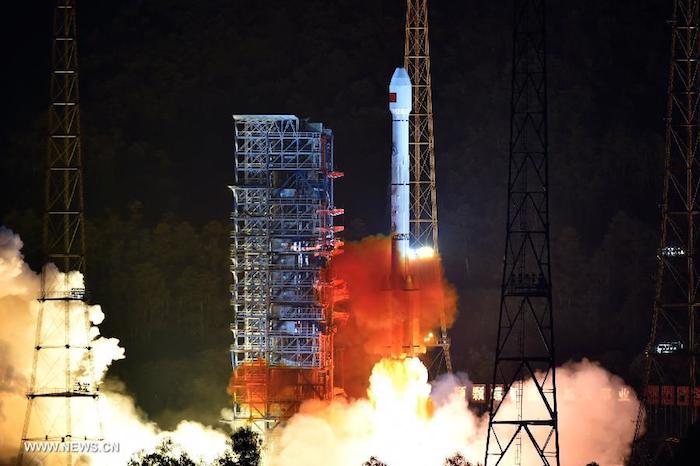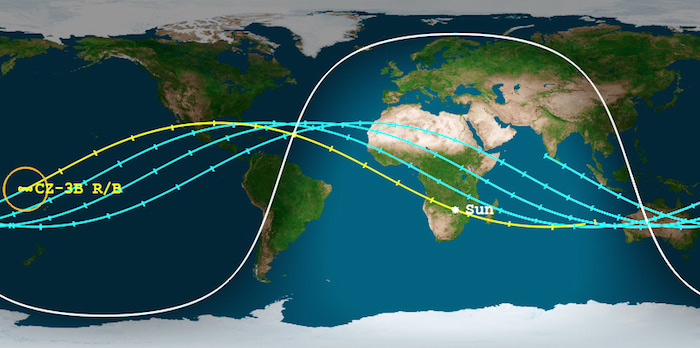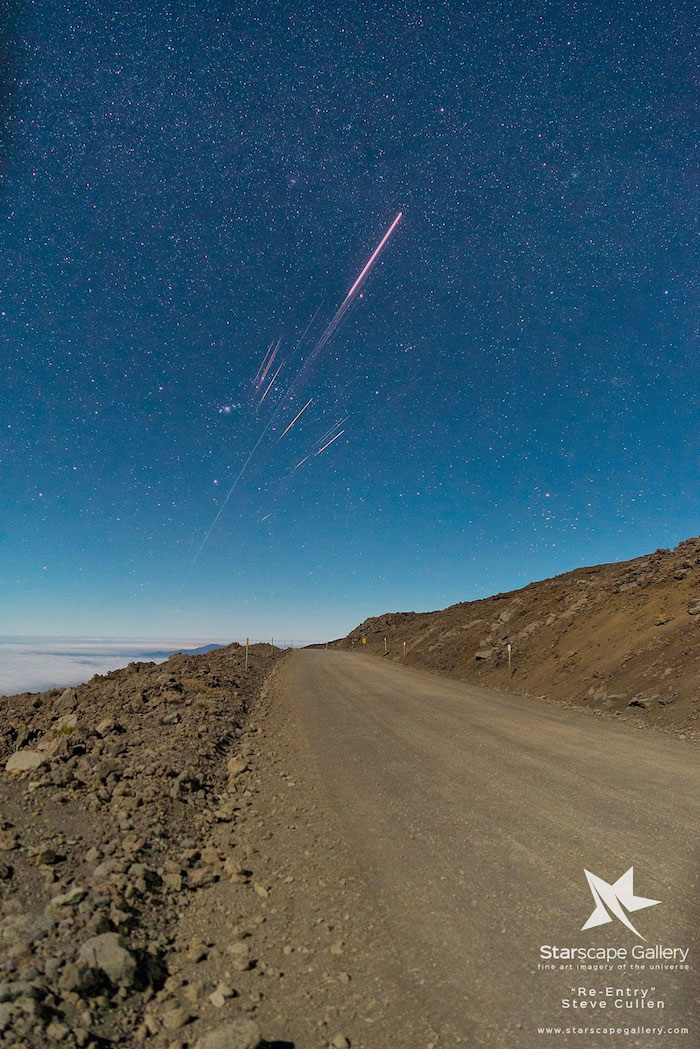.

The second Chinese launch of 2016 took place at 07:29 UTC on Monday, with a Long March-3C/YZ-1 rocket tasked with orbiting another Beidou-3 navigation satellite. The launch of BDS M3-S (or Beidou-21) took place from the Xichang Satellite Launch Center. Apparently, this mission involves the last experimental satellite of BeiDou Phase III.
Chinese Launch:
Monday’s launch was the first of a series of Beidou launches schedule for 2016, making another step in the completion of the Phase III of the Beidou program in 2020.
However, the launch initially received a blackout in the Chinese media, with lift-off only confirmed by local observers. It took several hours – once the spacecraft was successfully deployed – for the Chinese media to acknowledge the launch.
The Beidou Phase III system includes the migration of its civil Beidou 1 or B1 signal from 1561.098 MHz to a frequency centered at 1575.42 MHz – the same as the GPS L1 and Galileo E1 civil signals – and its transformation from a quadrature phase shift keying (QPSK) modulation to a multiplexed binary offset carrier (MBOC) modulation similar to the future GPS L1C and Galileo’s E1.
The Phase II B1 open service signal uses QPSK modulation with 4.092 megahertz bandwidth centered at 1561.098 MHz.
The current Beidou constellation of geostationary (GEO) – five inclined geosynchronous orbit (IGSO), and four middle Earth orbiting (MEO) – spacecraft are transmitting open and authorized signals at B2 (1207.14 MHz) and an authorized service at B3 (1268.52 MHz).
Real-time, stand-alone Beidou horizontal positioning accuracy was classed as better than 6 meters (95 percent) and with a vertical accuracy better than 10 meters (95 percent).
The Compass Navigation Satellite System (CNSS) is China’s satellite navigation system, approved by the Chinese government in 2004, capable of providing continuous, real-time passive 3D geo-spatial positioning and speed measurement.
The Chinese navigation system is being developed and deployed in three phases: Phase 1 (starting in 2003), consisted of an experimental regional navigation system, BeiDou-1, which provided active navigation service; Phase 2 (started in 2012), consisted of a reduced satellite constellation and provides open service over China.
This phase aimed at deploying a system with passive positioning and timing capability over a regional area; Phase 3 (starting in 2020), by 2020, the system would reach full operational capability with a constellation of 27 MEOs plus 5 GEOs and the existing 3 IGSOs satellites of the regional system. C NSS would provide global navigation services, similarly to the GPS, GLONASS or Galileo systems.
CNSS is expected to support two different kind of general services: RDSS and RNSS. In the Radio Determination Satellite Service (RDSS), the user position is computed by a ground station using the round trip time of signals exchanged via GEO satellite. The RDSS Long term feature further includes: short message communication (guaranteeing backward compatibility with Beidou-1), large volume message communication, information connection, and extended coverage.
The Radio Navigation Satellite Service (RNSS) is very similar to that provided by GPS and Galileo and is designed to achieve similar performances.
The long-term goal is to develop a global navigation satellite network similar to the GPS and GLONASS by 2020 eventually consisting a constellation of 35 vehicles, including 27 MEO (21,500 km orbits) satellites, three IGSO satellites (inclined at 55 degrees) and five GSO satellites.
The system will be dual use, based on a civilian service that will provide an accuracy of 10 meters in the user position, 0.2 m/s on the user velocity and 50 nanoseconds in time accuracy; and the military and authorized user’s service, providing higher accuracies. The first phase of the project will involve coverage of the Chinese territory. However, the future Compass constellation will cover the entire globe.
The new satellite – now named as BDS M3-S (Beidou-21) – uses a new bus that feature a phased array antenna for navigation signals and a laser retroreflector, with a launch mass 1,014 kg. Spacecraft dimensions are 2.25 by 1.0 by 2.2 meters. Usually the satellites are on a 21,500 – 21,400 km nominal orbits at 55.5°
Launch vehicle and launch center:
This mission used the Long March-3C/YZ-1 (Chang Zheng-3C/YZ-1) version of the Long March-3C.
The Long March-3C was developed to fill the gap between the Long March-3A and the Long March-3B, having a payload capacity of 3,800 kg for GTO or 9,100 kg for LEO. This is a three stage launch vehicle identical to the CZ-3B but only using two of the strap-on boosters on its first stage.
CZ-3C provides two types of fairing and two kinds of fairing encapsulating process and four different payload interfaces, which is the same as CZ-3B launch vehicle. The various fairing and interface adapter and the suitable launch capacity make CZ-3C a good choice for the user to choose the launch service.
The development of the CZ-3C started in February 1999. The rocket has a liftoff mass of 345,000 kg, sporting structure functions to withstand the various internal and external loads on the launch vehicle during transportation, hoisting and flight.
The rocket structure also combines all sub-systems together and is composed of two strap-on boosters, a first stage, a second stage, a third stage and payload fairing.
The first two stages as well as the two strap-on boosters use hypergolic (N2O4/UDMH) fuel while the third stage uses cryogenic (LOX/LH2) fuel. The total length of the CZ-3C is 54.838 meters, with a diameter of 3.35 meters on the core stage and 3.00 meters on the third stage.
On the first stage, the CZ-3C uses a DaFY6-2 engine with a 2961.6 kN thrust and a specific impulse of 2556.2 Ns/kg. The first stage diameter is 3.35 m and the stage length is 26.972 m.
Each strap-on booster is equipped with a DaFY5-1 engine with a 704.4 kN thrust and a specific impulse of 2556.2 Ns/kg. The strap-on booster diameter is 2.25 m and the strap-on booster length is 15.326 m.
The second stage is equipped with a DaFY20-1 main engine (742 kN / 2922.57 Ns/kg) and four DaFY21-1 vernier engines (11.8 kN / 2910.5 Ns/kg each). The second stage diameter is 3.35 m and the stage length is 9.470 m.
The third stage is equipped with two YF-75 engines developing 78.5 kN each and with a specific impulse of 4312 Ns/kg. The fairing diameter of the CZ-3C is 4.00 meters and has a length of 9.56 meters.
The Yuanzheng-1 (“Expedition-1″) uses a small thrust 6.5 kN engine burning UDMH/N2O4 with specific impulse at 3092 m/s. The upper stage should be able to conduct two burns and has a 6.5 hour lifetime.
It will be adapted for use on the CZ-3A/B/C series mainly for direct MEO/GEO insertion missions (mostly for the navigation satellites of the Beidou GNSS).
Typical flight sequence for the CZ-3C/YZ-1 sees the launch pitching over 10 seconds after liftoff from the Xichang Satellite Launch Centre. Boosters shutdown 2 minutes and 7.5 seconds after liftoff, separation from the first stage one and a half seconds latter. First stage shutdown takes place at 1 minutes 25.2 seconds into the flight.




Separation between the first and second stage takes place at 1 minute 26.7 seconds, following fairing separation at T+4 minutes 18.7 seconds. Stage 2 main engine shutdown occurs 328 seconds into the flight, following by the shutdown of the vernier engines 5 seconds later.
Separation between the second and the third stage and the ignition of the third stage takes place one second after the shutdown of the vernier engines of the second stage. The first burn of the third stage will lasts for 5 minutes and 16.6 seconds.
After the end of the first burn of the third stage follows a coast phase that ends at T+22 minutes and 3.2 seconds with the third stage initiating its second burn. This will have a 2 minutes 31.7 seconds duration.
After the end of the second burn of the third stage, the launcher initiates a 20 second velocity adjustment maneuver.
Spacecraft separation usually takes place at T+26 minutes 14.9 seconds after launch, but in this case we have the separation of the Yuanzheng-1 with the Beidou-21 satellite. The YZ-1 then executes to more orbital maneuvers to place the satellite in its intended orbit.

The Xichang Satellite Launch Centre is situated in the Sichuan Province, south-western China and is the country’s launch site for geosynchronous orbital launches.
Equipped with two launch pads (LC2 and LC3), the centre has a dedicated railway and highway lead directly to the launch site.
The Command and Control Centre is located seven kilometers south-west of the launch pad, providing flight and safety control during launch rehearsal and launch.
The CZ-3B launch pad is located at 28.25 deg. N – 102.02 deg. E and at an elevation of 1,825 meters.
Other facilities on the Xichang Satellite Launch Centre are the Launch Control Centre, propellant fuelling systems, communications systems for launch command, telephone and data communications for users, and support equipment for meteorological monitoring and forecasting.
The first launch from Xichang took place at 12:25UTC on January 29, 1984, when the Chang Zheng-3 (Y-1) was launched the Shiyan Weixing (14670 1984-008A) communications satellite into orbit.
Quelle: NS
-
SPECTACULAR Photos of a Rocket Re-Entering Over Hawaii!
-Around 2:00 a.m. local time on Saturday, Jan. 30, 2016, astrophotographer Steve Cullen was driving home from visiting the summit of Mauna Kea on the Big Island of Hawaii. He stopped at around 11,000 feet to take some panorama shots of the peak… but what he got was much more.
He noticed an orange light heading up into the sky out of the west. It was moving across the sky at about the speed you’d expect from a satellite, but at that time of night no satellite moving at that rate would be lit by the Sun, so it wouldn’t be visible.
Within seconds, though, it became clear what he was seeing: some sort of human-made space debris re-entering Earth’s atmosphere. How?
Because this. Check. This. OUT.
.

HOLY WOW! What a shot! (Click the photos for bigger, higher-resolution versions on Cullen's Facebook page.) Over the foreground of volcanic rock and more distant clouds (seen from above at that elevation), the debris came streaking toward the east, seeming bursting forth from the constellation of Orion (can you see it behind the trails?).
.

The rocket launched on Sep. 12, 2015, carrying a very secret satellite of some kind. Once the satellite is in orbit the rocket is no longer needed, so it’s allowed to burn up as it falls back to Earth. Doing so over the enormous Pacific Ocean minimizes the risk of debris doing any damage once it’s down.
As the rocket rams through Earth’s air, it compresses the atmospheric gas violently. A compressed gas heats up, and this is so powerful during re-entry that the heat is enough to vaporize the debris. It falls apart, each piece leaving a long trail of ionized metal and gas behind it that can glow for quite some time. They fall together, moving across the sky as a unit, though they separate over time as drag affects each piece separately.
A few minutes later, the pieces started to set in the east.
.

As the pieces move farther away, perspective makes it look like the trails are converging. This is the same effect that makes rays coming from sun set appear to diverge as they move away from the Sun, and sometimes converge on the other side of the sky.
.

Finally, once they were gone, all that was left was the bits of glowing particles, literally twisting in the wind dozens of kilometers above the Earth.
.

I can’t get over how amazing these photos are. I’ve seen lots of cool re-entry photos, but I think these very well might be the very best.
Mind you, Cullen happened to stop because he wanted to take a few more photos, and did so at just the right time to see this incredible event. Do I even need to say it?
Keep looking up! You never know what you might see.
Quelle: Bad Astronomy
4489 Views
